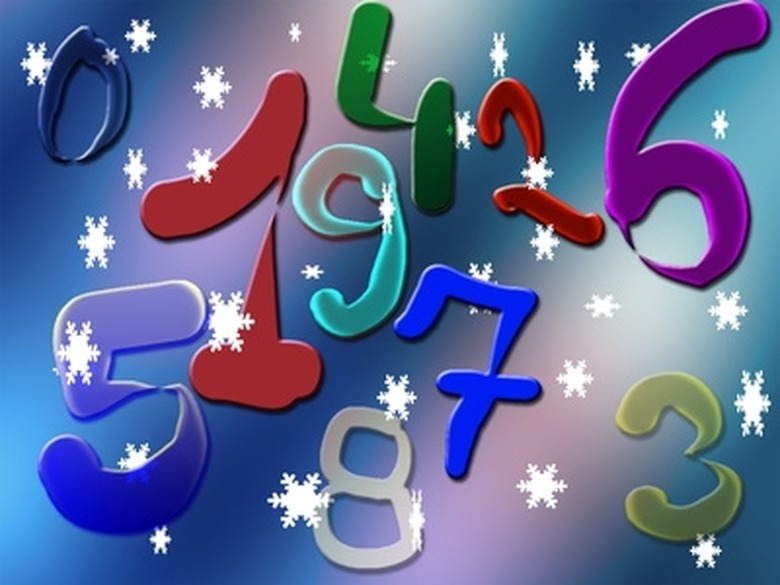How To Find The Median
It's inevitable. At some time during your child's elementary education, a math problem is going to request that your child find the median. And no, the textbook isn't looking for that concrete strip running down the center of a divided highway! In math, the median (a word that just means midpoint) represents the middle number of a data set (any group of numbers). Follow these steps to learn the median.
Step 1
Begin by identifying the data set. This is the group of numbers for which you're asked to find the median. The data set can include any amount of numbers. Numbers may be repeated within the data set. In word problems, the data set may represent things like the ages of a group of children or the numerical scores of a class on a math test.
Step 2
Put the numbers in the data set in order by value, from lowest to highest. For example, you are given a data set like this: 15, 8, 47, 2, 36, 4, 21. You'd put them in order by value this way: 2, 4, 8, 15, 21, 36, 47.
Step 3
Look for the number that falls in the exact middle of the data set once the numbers are ordered by value. In the example given above, the number 15 is in the middle position. There are three numbers to the left of 15, and three numbers to the right, therefore the median is 15. Of course, it's easy to find the exact middle when the data set contains an odd number, as the example does. If your data set contains an even number of entries, go on to Step 4.
Step 4
Use a different calculation to find the median when a data set contains an even number. For example: 2, 4, 8, 22, 22, 42. There are six numbers in this data set, so there is no number that falls exactly in the middle. Instead, you calculate the median by locating the two numbers that fall in the middle. Add the two numbers together (in this case 8 and 22) and then divide the total by 2 (8 plus 22 equals 30 and 30 divided by 2 equals 15). The result is the median.
Step 5
Pat yourself (and your child, if you're offering homework help) on the back. You've just found the median!
TL;DR (Too Long; Didn't Read)
Remember that it doesn't matter if numbers are repeated in a data set. Each number counts separately, no matter how many times it's repeated. When finding the median of a data set containing an even number of entries, you won't always get a whole number. If the sum of the two middle numbers is an odd number, dividing it by 2 will leave you with a mixed number (x.5). That's fine. Wondering what good knowing the median is, anyway? The median often gives a more accurate representation of the data set than simply finding the average (or mean) might. If your three kids have $2, $3 and $25 in their piggy banks, respectively, each child would have an average of $10. But the truth is, only one of the kids is a double-digit saver. The $3 median more accurately represents the reality of the piggy-bank data set.
Warning
Don't confuse the median with two other math terms it hangs out with: the mean and the mode. The mean is the average of the data set. To find it, you add all the numbers together and divide the total by the number of items in the set. The mode is simply the number that occurs most frequently in a data set that contains repeated numbers.
Cite This Article
MLA
Contributor, . "How To Find The Median" sciencing.com, https://www.sciencing.com/find-median-2046805/. 24 April 2017.
APA
Contributor, . (2017, April 24). How To Find The Median. sciencing.com. Retrieved from https://www.sciencing.com/find-median-2046805/
Chicago
Contributor, . How To Find The Median last modified August 30, 2022. https://www.sciencing.com/find-median-2046805/
